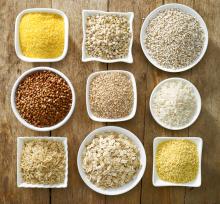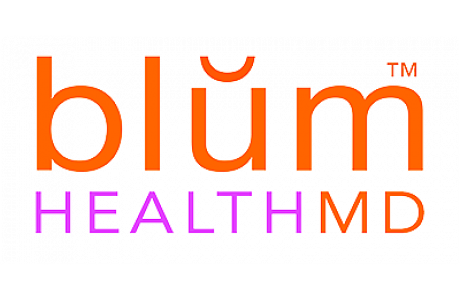In Defense of Grains

[This post is adapted from the chapter, “In Defense of Grains” in my upcoming Essential Thyroid Cookbook.]
You may remember a post I wrote a few weeks ago called, AIP for Autoimmunity: Is it ALWAYS the Answer?
I recommend reading it, if you haven’t already, as a primer for today’s post. As a quick intro, from that prior post…
Background
If you’ve been tuned into the online communities related to thyroid health, Hashimoto’s, and other autoimmunity, and perhaps read many of the same books and blogs that I have, you’ve likely heard of – and likely tried – a Paleo (aka ancestral) or AIP (autoimmune protocol) diet.
Given that 70-80 percent of our immune system is in our digestive system, it’s imperative to heal the gut for immune modulation and management of any autoimmune condition.
My position on Paleo/AIP:
- I see merit in the Paleo and AIP diets right out the chute – in some circumstances.
- I’m wholeheartedly skeptical of removing whole food groups from the diet, even for those with autoimmunity.
My non-adoption of an AIP diet for both myself as well as my most of my clients (most, not all) and my acceptance of non-gluten grains is thoughtful and intentional, based on years of personal and professional experience.
I do have some “restrictions” around grains, which have remained unchanged, even going back to my pre-Hashimoto’s days (both prior to my diagnosis and in my coaching practice):
Largely limit (or eliminate) flour-based products and eat true whole (intact) non-gluten grains, in moderation, because it’s true that a diet heavy in grains can be inflammatory and lead to weight gain and blood sugar dysregulation.
To go deeper, below is a chapter from my upcoming cookbook called, “In Defense of Grains” that highlights the potential benefit of grains for our digestive system.
I know, it flies in the face of everything we’ve been told.
[Lisa and I recognize there are varying therapeutic diet approaches in the Functional and Integrative Nutrition communities that support thyroid and immune health, so our cookbook features user-friendly icons to help you easily decipher which recipes will fit your individual dietary needs at-a-glance. There’s no one-size-fits-all way to make our recipes work for everyone, so we made every effort to provide sensible adaptations to modify them to fit dietary practices such as Paleo and AIP, whenever possible. In most cases, the adaptation may include simply omitting an ingredient or making a simple ingredient swap to make it compliant.]
Spotlight: In Defense of Grains
Gluten-containing grains, including wheat (einkorn, durum, faro, graham, kamut, semolina, spelt), barley, rye, and triticale should be avoided for those with Hashimoto’s – or any autoimmune condition. And for some, going completely grain-free can be helpful for managing their autoimmunity.
But my cookbook co-author, Lisa Markley, MS, RDN and Bastyr-trained Culinary Nutritionist, and I don’t believe that whole, gluten-free grains are categorically bad for everyone, even during immune modulation and especially after your Hashimoto’s/autoimmunity is managed.
Yes, we’re outliers and yes, we’re totally sticking our necks out on this.
The argument against grains is that they contain the anti-nutrients phytic acid and lectin, along with enzyme-inhibitors that block mineral absorption and irritate the intestinal wall, which is clearly what you want to avoid when on an autoimmunity recovery program. Yet these anti-nutrients are also found in vegetables like beets and dark leafy greens, but that doesn’t mean we shouldn’t eat these foods.
Grains are naturally high in vitamins and minerals and the key is to properly prepare them to release these nutrients. It’s only recently – the past century or so – that we’ve gotten away from the traditional practices of leavening/fermentation, soaking, and sprouting (germinating), which “pre-digests” grains. Additionally, Vitamin A inhibits the potentially negative effects of phytic acid.
When prepared traditionally, grains are much easier to digest, we’re able to absorb their nutrition, and they help to produce serotonin, a neurotransmitter that brings about a sense of comfort, calm, and alertness. (The potential for serotonin production is enough right there to consider whether grains should be avoided.)
Additionally, when you consider that sprouted grains encourage the growth of friendly intestinal bacteria, help to keep the colon clean, and are high in antioxidants, we have to ask ourselves if moderate consumption of grains, along with a gut-healing protocol, is really such a bad idea.
Justin Sonnenburg, PhD and Associate Professor of Microbiology and Immunology at Stanford is the author of The Good Gut, co-authored by his wife, Erica Sonnenburg, PhD. They’ve been trailblazers in researching how the fiber in grains (and legumes) improves the health of our gut microbiome, our 100 trillion organism-strong “mini ecosystem” also known as “the forgotten organ.”
The Sonnenburgs are considered some of today’s preeminent experts in digestive health and when asked about their family’s dietary habits, said, “We eat a lot of whole grains, a lot of legumes, a lot of vegetables and a lot of fruit. This diet is rich in complex carbohydrates…and is designed to create and maintain diversity within the gut microbiota.”
Addressing the myth that our ancestors only ate meat and vegetables, globally recognized leader in natural health and Ayurvedic medicine, Dr. John Douillard, states, “According to the latest anthropological findings, much of the ‘gathering’ was harvesting grain from indigenous grasses. This contributed greatly to the starch that researchers believe made up some 35 percent of the hunter-gatherer diet.
“The anti-grain sentiment that floods the media today has much to do with the fact that we have over-eaten grains. New studies suggest that we have microbes and specific enzymes specially designed to break down the hard-to-digest gluten protein – when eaten in season and in moderation.”
In sharing Dr. Douillard’s quote, I’m not suggesting that anyone with Hashimoto’s or other autoimmunity eat gluten.
But I believe we can extrapolate his thinking about gluten to any grain meaning, grains may be tolerable by most people, in moderation.
Dr. Susan Blum, author of The Immune System Recovery Plan, regularly mentions quinoa, amaranth, millet, teff, buckwheat, various types of rice, and also legumes as part of her healing program and uses these grains in several of her recipes. She calls them “foods to include.”
Many experts also claim that grains improve digestive health by way of their prebiotic activity. Prebiotics promote the growth of good bacteria in our digestive system. Unlike probiotics, which are living organisms, prebiotics are a “functional food” and feed the good bacteria already present in the gut.
Free Yourself?
In working with hundreds of clients over the last several years in gut-healing and immune modulation, I’ve only asked a handful of clients to go full blown AIP, based on their specific circumstance. And as I state in my prior post, if someone knows that grains give them overt digestive issues, I’m certainly not going to tell them to eat them.
But I believe that too many have fallen prey to the slippery slope of what my functional medicine doctor calls, “being a prisoner of perceived risk.” In other words, there are many foods that may not be “risky” and he also doesn’t advocate a long-term, super-restrictive diet – for any autoimmune condition.
Being a prisoner is stressful. My prior post addresses how stress is a trigger for autoimmunity.
So yes, for true immune modulation, there are foods that need to be taken out of the diet – usually for a shorter time than people think. And for many, this requires guidance and education on how to fast-track the turnover of the epithelial cells of the digestive lining.
Let’s put it this way – for many people, immune modulation doesn’t require months and years, given that the epithelial cells of the lining of the digestive wall are some of the fastest cells in the body to regenerate. They just need a chance.
In other words, a lot of healing can take place in a few weeks, depending on the person and the severity of their autoimmunity.
I’ll leave you with this. As many of you also may know, I’ve largely moved into working with people with alopecia (autoimmune hair loss). Of the people I’ve worked with so far, only one has been grain-free, upon her own choice.
With the exception of one client, who I just started working with, all of my alopecia clients are re-growing hair where they were once bald. Eyelashes and eyebrows are coming in in about four weeks. Along with an Elimination/Provocation diet, they’re all eating moderate amounts of whole grains.
And they’re much happier knowing that their diet doesn’t have to be unnecessarily restrictive, which makes the journey that much easier.
So, until I’m convinced otherwise, I’m going to stick with the old saying, “If it ain’t broke, don’t fix it.”

Comments
I am glad to see you are one
I am glad to see you are one of the outliers. I am always skeptical about catagoric statement. I would like to learn more about the whole grain preparation. I suppose I will need to wait for your book.
I think the reason was not
I think the reason was not phytic acid and lectins but molecular mimicry for some of the gluten-free grains.
Hi Simona, that’s a good
Hi Simona, that’s a good point. And I know that some experts argue that even “gluten-free” grains could still be cross-contaminated with gluten. I personally feel that “certified gluten-free” products are likely safe. I don’t buy grains in bulk. And indeed, a lot of certified products are gluten-free junk food that I would never touch. http://www.gfco.org
Thank you for replying. Cross
Thank you for replying. Cross-reactivity with gluten is the rationale for eliminating millet, corn, rice and potato. I wouldn't eat millet and soy at all, neither amaranth or buckwheat which would be ok, I don't know what to do with them, so it's not an issue.
I have joint pains and I am trying to do an AIP for a month to let my gut heal. It is very restrictive and there are certain things, especially dark chocolate, nuts, eggs, nightshades, spices, and rice (to a lesser extent) that I miss, but it's doable now in the summer as I have a bit more time and I can prepare food at home for myself while cooking for the others too. I already cut dairy for acne before so I got used to that and I don't eat wheat since 2008. It's hard to do it alone.
Great article and rationale!
Great article and rationale! I can't wait to read the book Jill!
Add comment